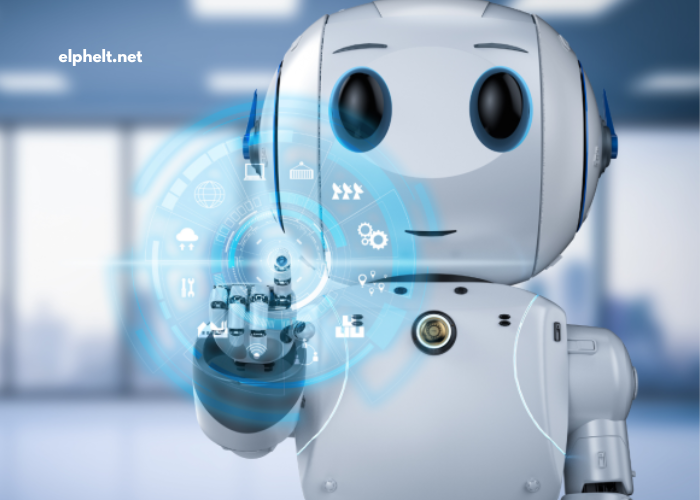Technology is evolving at an exponential rate, continually reshaping industries and everyday life. From advancements in artificial intelligence (AI) to the rise of quantum computing, the future of technology holds transformative potential for all aspects of society. As we move deeper into the 21st century, understanding what’s next in technology is crucial for businesses, professionals, and enthusiasts to stay ahead of the curve.
In this article, we will explore the key trends that are expected to define the future of technology. From innovations in digital connectivity to breakthroughs in biotechnology, these are the tech trends you need to keep an eye on.
Artificial Intelligence (AI) and Machine Learning (ML)
The Growing Role of AI in Everyday Life
Artificial Intelligence is no longer a concept confined to science fiction. AI technologies are already present in numerous industries, and their applications are only expanding. In the near future, AI will continue to improve the efficiency of processes, enhance automation, and unlock new possibilities across sectors like healthcare, finance, and customer service.
Machine Learning, a subset of AI, is particularly important for its ability to learn from data and improve over time. This self-learning process is key to making AI more autonomous and adaptable. We’re already seeing machine learning algorithms optimize everything from marketing campaigns to predictive maintenance in manufacturing.
Natural Language Processing (NLP) Advances
One of the most exciting developments within AI is Natural Language Processing (NLP). NLP is enabling machines to understand, interpret, and generate human language with incredible accuracy. This is revolutionizing chatbots, voice assistants, and even content creation. As NLP technology continues to advance, we can expect more human-like interactions with digital devices.
Quantum Computing
What is Quantum Computing?
Quantum computing represents a leap forward in computational power. Unlike traditional computers that process information in binary (1s and 0s), quantum computers use quantum bits, or qubits, which can exist in multiple states simultaneously. This ability to process vast amounts of information at once makes quantum computers incredibly powerful, especially for solving complex problems that would take traditional computers millennia to crack.
Potential Applications of Quantum Computing
The future applications of quantum computing are vast and potentially groundbreaking. One of the most promising areas is in drug discovery, where quantum computers could simulate molecular structures to uncover new treatments for diseases. Quantum computing also has the potential to revolutionize fields such as cryptography, artificial intelligence, and material science by providing solutions to currently intractable problems.
However, despite its promise, quantum computing is still in its infancy, and there are many hurdles to overcome before it becomes a practical tool for widespread use. Nonetheless, significant investments are being made into quantum research, and major companies like Google, IBM, and Microsoft are at the forefront of this emerging field.
5G and Beyond: The Future of Connectivity
The Impact of 5G Technology
The rollout of 5G networks is one of the most anticipated tech trends in recent years. With speeds up to 100 times faster than 4G, 5G promises to revolutionize industries and improve everyday life. This next-generation network will support the rapid growth of the Internet of Things (IoT) and enable advancements in smart cities, autonomous vehicles, and augmented reality (AR) applications.
The speed and low latency of 5G will allow for real-time data transfer and seamless connectivity, which will be essential for emerging technologies like AI, machine learning, and robotics. Additionally, 5G will significantly reduce network congestion, allowing for more devices to connect without performance degradation.
The Evolution of 6G
While 5G is still being rolled out globally, researchers are already focusing on the development of 6G technology. Expected to be commercially available by 2030, 6G will push the boundaries of connectivity even further. 6G promises ultra-fast speeds, improved coverage, and more efficient use of radio frequencies. It will be crucial for the proliferation of immersive technologies like holograms, advanced virtual reality, and even brain-computer interfaces.
Augmented Reality (AR) and Virtual Reality (VR)
The Growing Adoption of AR and VR
Augmented Reality (AR) and Virtual Reality (VR) are two technologies that are quickly gaining traction in entertainment, education, and industry. VR creates fully immersive environments, while AR overlays digital elements onto the physical world. Together, these technologies have the potential to change how we interact with the world around us.
In the gaming industry, VR is already offering players a more immersive experience, allowing them to step inside virtual worlds. Meanwhile, AR is enhancing shopping experiences by allowing consumers to try on products virtually before making a purchase.
Enterprise Applications of AR and VR
Beyond entertainment, AR and VR are poised to have a significant impact on business and industry. For instance, in manufacturing, VR can be used for training employees in a simulated environment, while AR can assist technicians in the field by providing real-time, step-by-step instructions for complex tasks.
In healthcare, AR and VR are already being used for surgical planning, therapy, and even pain management. The potential for AR and VR to improve training, enhance productivity, and deliver better customer experiences is vast and still unfolding.
Biotechnology and Healthcare Innovations
Advances in Genomics
Genomic research has already made significant strides, and the future promises even more breakthroughs. With the completion of the Human Genome Project, scientists have gained deeper insights into the genetic makeup of humans, paving the way for personalized medicine. By tailoring treatments to an individual’s genetic profile, healthcare providers can offer more effective and targeted therapies.
In the coming years, CRISPR gene-editing technology is expected to play a major role in combating genetic disorders, such as cystic fibrosis and sickle cell anemia. This technology holds the potential to not only treat but also eradicate certain genetic conditions at their source.
Health Tech and Wearables
The demand for wearable health tech devices has skyrocketed in recent years. Devices like smartwatches, fitness trackers, and even smart clothing can now monitor everything from heart rate to blood oxygen levels. As technology improves, wearables will become even more sophisticated, allowing for continuous health monitoring and early detection of health issues.
The integration of AI with wearable devices will enable more proactive health management. For example, AI-powered apps could analyze the data collected by wearables to predict potential health problems and provide recommendations before symptoms even appear.
Autonomous Vehicles and Transportation
Self-Driving Cars
One of the most eagerly awaited technologies of the future is autonomous vehicles. Companies like Tesla, Waymo, and Uber are making significant progress in developing self-driving cars. These vehicles are equipped with advanced sensors, cameras, and AI algorithms that allow them to navigate without human intervention.
The widespread adoption of self-driving cars could reduce traffic accidents, lower emissions, and improve the overall efficiency of transportation systems. However, regulatory hurdles, technological limitations, and public acceptance remain challenges to overcome before fully autonomous vehicles are a common sight on the roads.
Electric Vehicles (EVs) and Sustainable Transportation
In addition to autonomous vehicles, the rise of electric vehicles (EVs) is transforming the transportation sector. As concerns over climate change continue to grow, EVs are seen as a key solution to reducing carbon emissions and dependence on fossil fuels. Major automakers like Tesla, Ford, and General Motors are investing heavily in EV development, and governments around the world are offering incentives to encourage the adoption of cleaner transportation options.
As battery technology improves, the range and charging times of EVs will continue to improve, making them more convenient and accessible for consumers. The future of transportation is electric, and sustainable mobility is likely to be a central theme in the coming decades.
Blockchain and Decentralized Technologies
The Rise of Blockchain
Blockchain technology has emerged as a disruptive force, offering secure, transparent, and decentralized systems for managing digital transactions. While initially associated with cryptocurrencies like Bitcoin, blockchain has a wide range of applications across industries. Its potential to improve supply chain transparency, enhance data security, and enable smart contracts is already being explored.
In the future, blockchain could transform industries such as finance, healthcare, and government. For instance, it could streamline healthcare data management by providing secure access to patient records and ensuring data integrity. Similarly, blockchain could enhance transparency in supply chains, allowing consumers to trace the origin of products and ensure ethical sourcing.
Decentralized Finance (DeFi)
Decentralized finance (DeFi) is another blockchain-based trend that’s expected to revolutionize the financial sector. DeFi platforms use smart contracts and blockchain technology to offer financial services like lending, borrowing, and trading without intermediaries like banks. This democratization of finance has the potential to make financial services more accessible to people around the world, especially in underbanked regions.
Conclusion
The future of technology is both exciting and uncertain, with new innovations emerging every day. From AI and quantum computing to blockchain and autonomous vehicles, the technologies shaping the future will continue to disrupt industries and redefine how we live and work. Staying informed about these trends will be crucial for individuals and businesses looking to thrive in an increasingly tech-driven world.
As we look ahead, it’s clear that the possibilities are limitless, and the next wave of technological advancements is poised to create a world that’s faster, smarter, and more interconnected than ever before.







